One of SoMAS’ paramount objectives is to educate and train students to become the next generation of marine and atmospheric scientists, environmental resource managers, and citizens who possess a fundamental grasp of environmental issues and the choices that society faces in handling these issues.
Undergraduate
The first undergraduate degree offered through SoMAS was a minor in marine sciences established in 1988. In 1992, an Oceanography and Environmental Studies track was established in the Multidisciplinary Studies undergraduate degree program. Also in that year, the Marine Sciences Research Center (MSRC) offered its first undergraduate major, as the University’s Institute for Terrestrial and Planetary Atmospheres (ITPA) was transferred to MSRC, bringing with it the Atmospheric Sciences/Meteorology BS degree program. Over time, other undergraduate degree programs followed: a BA in Environmental Studies (2001) and a BS in Marine Biology and a BS in Marine Vertebrate Biology (both in 2005). The Environmental Studies major is designed for students anticipating a non-science career but one with a strong environmental bent, e.g., environmental journalism. The Marine Biology and Marine Vertebrate Biology degrees prepare students for a career in the sciences or environmental management. From May 1992 through December 2008, 174 students have graduated from SoMAS with an undergraduate degree.
Graduate
MSRC’s first graduate degree program, the Marine Environmental Studies Program (MESP), was authorized in April 1970 and produced its first graduate in May 1971. The MESP program was a Masters of Science program designed for practicing professionals and recent college graduates with varied academic backgrounds. Its curriculum offered a strongly interdisciplinary examination of the diverse factors affecting the marine environment and was designed to prepare students for careers in the then-rapidly expanding fields of coastal management, environmental monitoring and protection and resource management. During the 1975-76 academic year, MSRC conducted an internal review of the MESP program. As a result of this review, the program name was changed to “Marine Environmental Sciences Program” and the program’s focus was shifted more towards hard science, with somewhat less emphasis being given to management and specific environmental problem-solving.
In April 1978, the Board of Trustees of the New York State Education Department approved MSRC’s Ph.D. program in coastal oceanography. The following September, the program was approved by New York Governor Hugh Carey. The Ph.D. program graduated its first two students in December, 1981.
In 2007, as MSRC was renamed the School of Marine and Atmospheric Sciences, our graduate programs were re-titled to more properly reflect the unified educational experience within the school that is offered to both marine and atmospheric science students. At present, SoMAS offers both MS and Ph.D. degrees in Marine and Atmospheric Sciences, with concentrations in either the marine or atmospheric sciences.
Since 1971, SoMAS graduate programs have produced 697 graduates; 574 received a MS degree, 184 received a Ph.D. and 61 received both degrees. The alumni profiles below highlight a few of our graduates.
Shaocheng Xie (PhD, 1998)
“Being an atmospheric scientist in a renowned national laboratory for 4 years, I always feel indebted and grateful to the teaching staff and the research facilities in Marine Science Research Center in Stony Brook University, where I studied and worked as a Ph.D. candidate in those years. During the years in MSRC, I’d been surrounded by a very high-quality academic research atmosphere. This atmosphere enabled everyone here to develop the high quality and performance required to become a professional scientist. I benefit a lot from the life at MSRC in my everyday research work at Lawrence Livermore National Lab.”
Shaocheng Xie, Ph.D. 1998
Marci Bortman (PhD, 1997)

Marci Bortman is the Director of Conservation Programs and the Marine Team Leader for The Nature Conservancy on Long Island. Marci is actively engaged in conservation strategies to restore and protect Long Island’s land and water. Her work includes preserving and restoring shellfish, eelgrass, salt marsh and natural shorelines, promoting better stewardship of our forests and grasslands, land protection, and development of public policy strategies to improve water quality and mitigate environmental threats.
Her professional experience includes working as a John A. Knauss Sea Grant Marine Policy Fellow, and as Senior Congressional Staff to the Honorable William J. Hughes, member United States House of Representatives, advising him on marine and environmental federal policy.
Marci earned her bachelor’s degree from the University of Rhode Island and a master’s degree from Florida Institute of Technology. She received her Ph.D. (1997) in coastal oceanography from SoMAS, then the Marine Sciences Research Center, at Stony Brook University. Her doctoral research focused on the trends in land use, sewage and stormwater and their relationship with coastal water quality in St. Thomas, U.S. Virgin Islands.
Danny Lu (PhD, 1997)
Danny Lu is chief executive officer and co-founder of Seawolf Technologies Incorporated, one of the leading software and service providers of Voice over Internet Protocol (VoIP). He oversees the company’s key business and technology developments. Danny successfully leads the company to reach multimillion dollar revenues with limited private investments.
Danny also serves as Chairman of Chinawind Communications Limited, which is a nationwide wireless service provider in China. He also served as a senior IT/Business manager at Merrill Lynch. Prior to joining Merrill Lynch, Danny was a lead research scientist at YSA Corporation, where he was in charge of three dimensional atmospheric simulation projects for the United States Air Force, Navy, and National Park Service.
He earned bachelor and master of science degrees in meteorology from Hangzhou University, China. Danny earned his Ph.D. (1997) in atmospheric science from SoMAS, then the Marine Sciences Research Center, at Stony Brook University. His doctoral research focused on the effects of cloud-radiative forcing on atmospheric response to the tropical sea surface temperature anomaly.
Shino Tanikawa Oglesby (MS, 1997)
“MSRC offers a rare opportunity to interact with students and faculty from all over the world, in many disciplines, and of all ages. This diversity is a form of learning experience that no oceanography textbook can ever give.”
Shino Tanikawa Oglesby, M.S. 1997
Laura Klahre (MS, 1997)
Bees are considered the world’s most important pollinator of food crops. In fact, it’s estimated that one third of the food that we consume each day relies on pollination, mainly by bees. Alumna Laura Klahre, ’97, witnesses the importance of that very fact every day. Laura and her winemaker husband Adam Suprenant own Blossom Meadow Farm, in Southold, New York, where she grows strawberries, raspberries, and blueberries, and cover crops of turnips, canola, and buckwheat. While she got her start in farming with honeybees more than twenty years ago, none are found at the farm anymore. All crops are pollinated by native bees, including the gentle, easy-to-raise mason bee. Klahre is quick to point out that honeybees are an invasive species and that an overwhelming amount of evidence has proven their negative impact on the natural world. “In addition, native bees pollinate two to three times better than honeybees and the resulting fruit is heavier, more well-rounded, and higher quality,”said Klahre.

Bee rancher Laura Klahre sits by her mason bee cottages at Blossom Meadow Farm in Southold, Wednesday, May 24, 2017. Photo by Randee Daddona
Blossom Meadow Farm is well known for its red raspberry, black raspberry, strawberry and blueberry jams, as well as selling high-quality mason bee cocoons. Thanks to her efforts, more than 100 families have begun raising mason bees, also known as bee ranching.
Wine-lovers on Long Island’s East End may know Laura as the co-proprietor of Coffee Pot Cellars in Cutchogue, where she runs a Merlot for Monarchs campaign. As part of the campaign, the farm grows a butterfly milkweed plant (Asclepias tuberosa) for each bottle of merlot sold at the winery. She then works with libraries and Girl Scouts to plant and restore monarch butterfly habitat throughout Long Island in June of each year. “Monarch butterflies will only lay their eggs on milkweed and scientists estimate that more than 1.3 billion stems of milkweed will need to be restored for the species to bounce back,” said Klahre. Coffee Pot Cellars also showcases a Cyser, which is a hard cider made from apples pollinated by Klahre’s mason bees and that uses the traditional French Champagne sparkling wine method, méthode Champenoise.
On a cold, windy day in late March, it’s hard to imagine the farm abuzz with bees and brimming with the food they crave. Her husband will join her to tackle farm chores later in the day, but for now her only assistant is Beasley, a pug who follows her everywhere, silently.
Klahre’s farm is interlaced with trails of pollinator-friendly native perennials including blue giant hyssop, purple coneflower, wild quinine, sweet goldenrod, and common milkweed, and native shrubs including summersweet, beach plum and winterberry. The farm also features a large patch of managed grassland. “Seventy percent of bees live in the ground, so you have to give them a place to live,” she said.
“A large majority of bees and other insects are malnourished in today’s world. We need to plant more native trees, shrubs and flowers,” she said.
A marine environmental sciences major who earned her masters degree at Stony Brook, Laura said the switch to terrestrial ecology is not as big a leap as one might think.
“You’re dealing with the same ecological principles on land as under water,” she said. “Stony Brook helped me think critically and I take that information and apply it. I think it’s great that Stony Brook is raising awareness about how to help pollinators.”
Klahre credits her father with giving her a piece of timeless advice that now shapes her own philosophy and drive: “He told me ‘All you have in this world is your name so you had better make something good.’ ”
One taste of her red raspberry jam is all the proof you need that she heeded her dad’s counsel, and that the world is a better place thanks to pollinators.
— Glenn Jochum
Mead Allison (PhD, 1993)
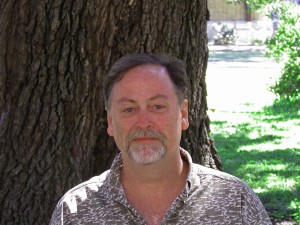 “MSRC is at the vanguard of a new public awareness of the importance and fragility of the coastal zone. I cannot imagine a more exciting opportunity for prospective students seeking to make a meaningful contribution to important issues, while at the same time receiving a high quality education.”
“MSRC is at the vanguard of a new public awareness of the importance and fragility of the coastal zone. I cannot imagine a more exciting opportunity for prospective students seeking to make a meaningful contribution to important issues, while at the same time receiving a high quality education.”
Mead Allison, Ph.D. 1993
Associate Professor
Tulane University
John Reinfelder (PhD, 1993)
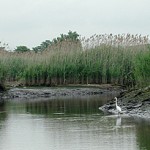 “The interdisciplinary emphasis of the marine science program at Stony Brook has been one of its great strengths and prepared me well for my current position as an associate professor of environmental science at Rutgers University. In my research, I have recently been occupied tracking down mercury in some of our urban coastal waters, which as this photo of the New Jersey Meadowlands attests, should not be thought of as beyond repair. I am often struck by the importance of the experiences I had at MSRC that were not directly related to my graduate research.
“The interdisciplinary emphasis of the marine science program at Stony Brook has been one of its great strengths and prepared me well for my current position as an associate professor of environmental science at Rutgers University. In my research, I have recently been occupied tracking down mercury in some of our urban coastal waters, which as this photo of the New Jersey Meadowlands attests, should not be thought of as beyond repair. I am often struck by the importance of the experiences I had at MSRC that were not directly related to my graduate research.
Through these experiences, I learned something about benthic ecology, organic geochemistry, and how to host a “distinguished visiting scholar,” all of which has been extremely useful as a teacher and a professional scientist. I have great memories of the positive work and social environment among the students and faculty at MSRC, which recent visits back to Long Island tell me still exists.”
John Reinfelder, Ph.D. 1993
Associate Professor
Dept of Environmental Sciences
Rutgers University
Lisa Clough (PhD, 1993)
Lisa Clough, who received her Ph.D. in Coastal Oceanography from the Marine Sciences Research Center at Stony Brook University in 1993, was one of the first graduate alumni to be featured on our website. Her thesis, conducted under the direction of Professor Glenn Lopez was titled “Digestibility of Ice Algae and Phytoplankton: The Potential Impacts of Changing Food Supply to the Arctic Benthos.” She continued her work on the Arctic while a faculty member at East Carolina University
In 2015 Lisa was was named Head of the Ocean Section Division of Ocean Sciences at the National Science Foundation (NSF). Before this prestigious assignment, Lisa served as the Program Director for Antarctic Integrated System Science in the Division of Polar Programs at NSF. Lisa has served as chair of the UNOLS Arctic Icebreaking Coordinating Committee, and is the recipient of both the Arctic and Antarctic Service Medals, and the Distinguished Public Service Award from the U.S. Coast Guard. Prior to joining NSF Lisa was a faculty member at East Carolina University, also serving as the Associate Vice Chancellor for Research.
“The degree of collaboration between faculty, and the level of respect and camaraderie afforded graduate students by the faculty is what made my project possible, and what makes the MSRC environment truly unique. Since leaving MSRC, I’ve become an actual seagoing oceanographer, and I appreciate my multidisciplinary training all the more. My journeys have taken me to the Arctic Ocean four times in the last six years.
Because graduate students are encouraged to do things like give the informal Friday afternoon seminar, I felt very well prepared to present my ideas to colleagues, and to face the challenges of teaching at the college level. My training at the MSRC, and the support network that is in place among and between graduate students, faculty, and staff has allowed me to wind up in a job that I truly enjoy going to (almost) every morning!”
Sanjay Gupta (MS, 1992)
 In 1992, Sanjay Gupta obtained his MS degree from Stony Brook in Marine Environmental Science, which he describes as “an excellent research and academic environment consisting of dedicated faculty and great facilities.” His focus was in physical oceanography with a thesis project developing numerical models that coupled biological and physical processes associated with the lifecycle of estuarine copepods, taking into account the impacts of climate change and how they could affect fisheries.
In 1992, Sanjay Gupta obtained his MS degree from Stony Brook in Marine Environmental Science, which he describes as “an excellent research and academic environment consisting of dedicated faculty and great facilities.” His focus was in physical oceanography with a thesis project developing numerical models that coupled biological and physical processes associated with the lifecycle of estuarine copepods, taking into account the impacts of climate change and how they could affect fisheries.
Currently an Independent Consultant in policy advocacy, water resources management, and international cooperation in South Asia, Sanjay’s clients include the World Bank, the International Union for Conservation of Nature, the United Kingdom’s Department of International Development, and Save the Children-Finland. According to Sanjay, “I get to work with local communities as well with senior-most policymakers working towards poverty reduction and enhancing prosperity.”
Sanjay says that SoMAS helped prepare him for his career three significant ways. He gained confidence in problem solving, gained a thorough understanding of estuarine dynamics that directly relates to water resource issues, and learned the utility of problem solving through multi-disciplinary teamwork. “SoMAS builds you into a multi-disciplinary professional with the requisite skills and confidence to solve real-life problems. SoMAS enables you to be innovative and think differently, to pursue careers that you cannot conceive of while studying but which you will come across as a professional.”
Hans Dam (PhD, 1989)
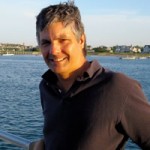 Hans Dam attended SoMAS, known as the Marine Science Research Center (MSRC) at the time, for both his Master’s and Doctoral degrees. After graduating from the University of Washington as an undergraduate in 1982, Hans came to Stony Brook to work with Dr. William Peterson. He received his MS in 1985, but stayed to work on his PhD with Dr. Peterson, finishing in 1989. During his time at the MSRC, Hans studied patterns of copepod abundance and grazing in Long Island Sound.
Hans Dam attended SoMAS, known as the Marine Science Research Center (MSRC) at the time, for both his Master’s and Doctoral degrees. After graduating from the University of Washington as an undergraduate in 1982, Hans came to Stony Brook to work with Dr. William Peterson. He received his MS in 1985, but stayed to work on his PhD with Dr. Peterson, finishing in 1989. During his time at the MSRC, Hans studied patterns of copepod abundance and grazing in Long Island Sound.
After leaving SoMAS, Hans spent a year as a post-doc at the University of Maryland’s Horn Point Laboratory. He was hired as an assistant professor at the University of Connecticut in 1991 in both the Department of Marine Sciences and the Department of Ecology and Evolutionary Biology. He has been at UConn ever since, and is currently the Acting Head of the Department of Marine Sciences and the Acting Director of the Marine Science and Technology Center.
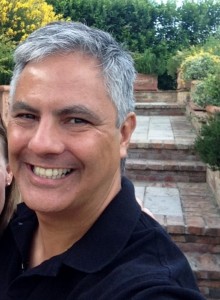 Hans’s research interests include plankton ecology and evolution, the role of zooplankton in biogeochemical cycling and fluxes of organic matter. Much of his current research focuses on plankton communities in Long Island Sound, including monitoring zooplankton populations and examining how they can control harmful algal blooms and how they respond to projected changes in temperature in the Sound associated with climate change. Hans also investigates harmful algae such as Alexandrium and how grazers respond to these blooms. He is in charge of the process studies of LISICOS, the Long Island Sound Integrated Coastal Observing System (http://lisicos.uconn.edu/). Several faculty at UCONN are conducting studies dealing with the control of hypoxia in the Sound. The contribution of Hans’ group to LISICOS is the study of downward fluxes of organic matter and grazing in elemental cycling in the Sound.
Hans’s research interests include plankton ecology and evolution, the role of zooplankton in biogeochemical cycling and fluxes of organic matter. Much of his current research focuses on plankton communities in Long Island Sound, including monitoring zooplankton populations and examining how they can control harmful algal blooms and how they respond to projected changes in temperature in the Sound associated with climate change. Hans also investigates harmful algae such as Alexandrium and how grazers respond to these blooms. He is in charge of the process studies of LISICOS, the Long Island Sound Integrated Coastal Observing System (http://lisicos.uconn.edu/). Several faculty at UCONN are conducting studies dealing with the control of hypoxia in the Sound. The contribution of Hans’ group to LISICOS is the study of downward fluxes of organic matter and grazing in elemental cycling in the Sound.
Hans reflects on his time studying marine sciences at Stony Brook: “At the risk of sounding corny, I am happy to say that my time at MSRC was one of the happiest ones. First, I had great teachers and mentors who helped me become a professional researcher, treated me with respect, and were extraordinarily generous with their time and their encouragement. Second, I also had great mates in my fellow students, some of whom have become life-long friends and colleagues. A great deal of what I am today, I owe to my years at MSRC.”
Xiao-Hai Yan, Ph.D. 1989
My marine remote sensing research progress, starting at MSRC, attests to our ability to meet the challenges of marine science’s new frontier and to MSRC’s commitment to educating a new generation of marine scientists.”
Xiao-Hai Yan, Ph.D. 1989
Professor of Oceanography, Co-Director of Center for Remote Sensing
University of Delaware Graduate College of Marine Studies
Greg Marshall (MS, 1988)
Greg Marshall is the Executive Director and Producer of Remote Imaging at National Geographic Television and Film. In 1991, Greg began working with National Geographic Television and established the Special Projects Unit, where he developed the technology known as the Crittercam. The Crittercam is a revolutionary tool that has been used to study the behavior of almost 40 different marine and terrestrial species in their natural habitat.
He has received two Emmy Awards for the National Geographic specials Great White Sharks and Sea Monsters: Search for the Giant Squid. Greg also produced the film Tiger Shark and a 13-part series called Crittercam for National Geographic television.
He earned a bachelor’s degree in international relations from Georgetown University. Greg earned his master’s degree (1988) in marine environmental sciences from the Marine Sciences Research Center at Stony Brook University. His research focused on the factors influencing the burying behavior of juvenile queen conch, Strombus gigas.
Greg Marshall returned to SoMAS in 2017 to help us celebrate our 50th Anniversary as the Akira Okubo Distinguished Scholar.
Gregg J. Rivara (MS, 1985)
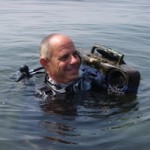 Aquaculture specialist Gregg Rivara has a certain affinity for Long Island. He grew up in Queens, received his Bachelor’s degree from Southampton College of Long Island University (now a satellite campus of Stony Brook) in 1982 and, soon after, began his Master’s degree at the Marine Science Research Center (now SoMAS). When he first arrived at MSRC, he had a research assistantship with Dr. Doug Capone and Dr. Ed Carpenter working with bacteria and microalgae, but Gregg’s true passion was shellfish. That’s when he connected with Dr. Robert Malouf, who helped Gregg receive a Sea Grant scholarship to pursue work with hard clams. His Master’s thesis examined how light and flow affect burrowing of very small, recently-set hard clams.
Aquaculture specialist Gregg Rivara has a certain affinity for Long Island. He grew up in Queens, received his Bachelor’s degree from Southampton College of Long Island University (now a satellite campus of Stony Brook) in 1982 and, soon after, began his Master’s degree at the Marine Science Research Center (now SoMAS). When he first arrived at MSRC, he had a research assistantship with Dr. Doug Capone and Dr. Ed Carpenter working with bacteria and microalgae, but Gregg’s true passion was shellfish. That’s when he connected with Dr. Robert Malouf, who helped Gregg receive a Sea Grant scholarship to pursue work with hard clams. His Master’s thesis examined how light and flow affect burrowing of very small, recently-set hard clams.Gene Carl Feldman (MS, 1983; PhD, 1985)
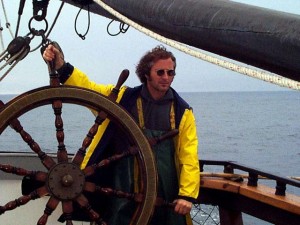 Gene Carl Feldman is an oceanographer at NASA/Goddard Space Flight Center. Currently, he is the project manager of the mission called SeaWiFS (Sea-Viewing Wide Field Sensor). Prior to his work with SeaWiFS, Gene worked with the Nimbus-7 Coastal Zone Color Scanner project.
Gene Carl Feldman is an oceanographer at NASA/Goddard Space Flight Center. Currently, he is the project manager of the mission called SeaWiFS (Sea-Viewing Wide Field Sensor). Prior to his work with SeaWiFS, Gene worked with the Nimbus-7 Coastal Zone Color Scanner project.
Gene has contributed to many additional programs, including the Joint Global Ocean Flux Study, Coastal Rhythms Exhibition at the New England Aquarium and the Jason Project. He has participated in several JASON expeditions including the JASON VII expedition when he explored the depths of the sea on board a United States Naval nuclear research submarine.
After earning a bachelor’s degree in biology at Stony Brook University, he spent three years as a Peace Corps volunteer in Western Samoa. Gene worked for the National Marine Fisheries Service and New York Sea Grant before returning to Stony Brook. Gene received his master’s degree (1983) in marine environmental sciences and his Ph.D. (1985) in coastal oceanography from the Marine Sciences Center at Stony Brook University. His doctoral research focused on satellite observations of phytoplankton variability in the eastern equatorial Pacific.
Craig Allen (BS, 1979)
Winner of ITPA Distinguished Alumni Award, October 2001
Meteorologist Craig Allen is the most authoritative weather source in the New York tri-state area. Heading WCBS 880’s weather team and CBS 2’s weekend team, Allen’s reports are accurate and authoritative, his manner warm & friendly.
Craig earned his meteorology degree from Stony Brook University in May of 1979 and became chief meteorologist for WCBS 880 the following Spring. The last 20 years have allowed Craig to form a special bond with WCBS listeners. Hundreds of letters to Newsradio 88 over the years confirm that listeners trust the accuracy of his weather reports.
At age 12, Craig Allen lugged a chalkboard to the kitchen table each night and pretended to be a TV weatherman, delivering a forecast to his family while they ate dinner. Today, audiences hear him deliver TV and radio reports locally and nationally, every weekday morning and weekends when the weather is severe and the need to have the best meteorologist in New York City arises.
It is the perfect occupation for someone who “loves to watch the forces of nature”, so much so that he sometimes leaps into his car “to chase thunderstorms all over Long Island, especially down by the beaches.” What the audience doesn’t know is how frightened he was of thunderstorms as a child. When he was 11, his grandparents gave him some weather instruments and “the fear turned to fascination. Now, I try to share that fascination & enthusiasm with my radio & TV audience.”
Craig’s day is a long one, up by 2:45 and in the weather center no later than 4 AM. His first radio broadcast is at 5:08 AM and on many days the last live forecast is at 6:08 PM. “I go home, eat, play with my son, then it’s off to sleep and next thing I know, the alarm is ringing for another day to begin.”
Unlike many media weather people who are not meteorologists, Craig prepares his own forecasts. He scans the tremendous (sometime overwhelming) amount of atmospheric data and ponders all the possibilities before typing out a forecast which so many people will rely upon… “but remember, there are too many variables surrounding us in this bubble of an atmosphere we call home. The atmosphere follows certain laws and never breaks away from them. We do not know all those laws neither do the computers. I don’t believe forecasting will ever be a perfected science.. but I damn well try my best!”
Despite Craig’s serious outlook, he finds his work to be enthralling. “I love my job. I try to convey my interest in weather to the audience. If there is severe weather. I’ll try not be overly grim but I’ll sure get the sense of urgency across to the listener! And if it is a nice day. I’ll try to make them ‘feel’ the weather; to bring it inside since so many people are indoors looking out the window during their workday”.
Here are some of Craig’s accomplishments over the years:
- Meteorologist for WCBS880 since 1980
- Weekend weather anchor for CBS 2 since 1990
- Earth & Atmospheric Sciences degree, Stony Brook University, 1979
- Member of American Meteorological Society,
- Radio Seal of Approval since 1985
- TV Seal of Approval since 1991
- Member of Long Island Weather Observers & North Jersey Weather Observers
- Member of New York Press Club
- A.F.T.R.A.
What does Craig do in his free time:
“I cherish it by: Sitting outdoors, watching the weather with my son, spending time at the beach, traveling by train and doing all gardening and landscaping around my home”.






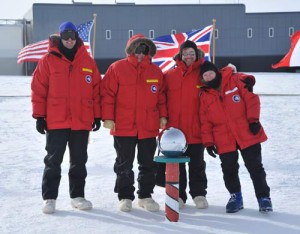

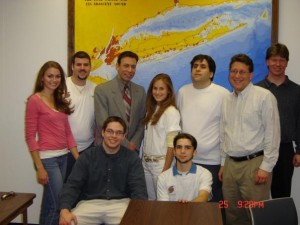
You must be logged in to post a comment.